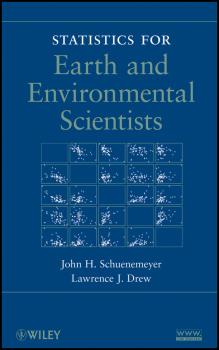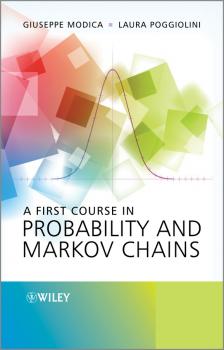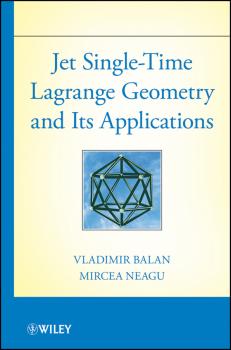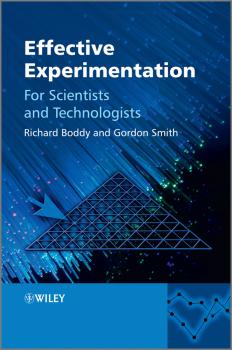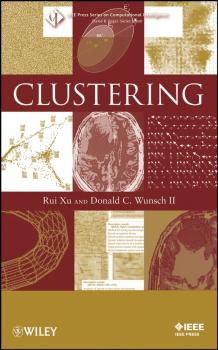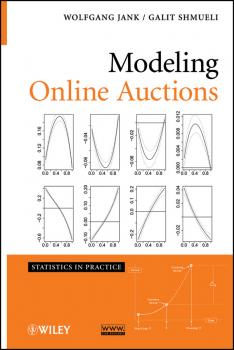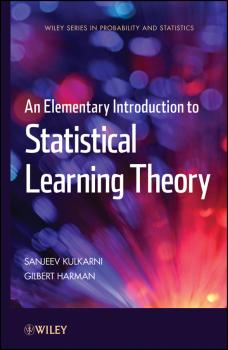Математика
Различные книги в жанре МатематикаStatistics for Earth and Environmental Scientists
A comprehensive treatment of statistical applications for solving real-world environmental problems A host of complex problems face today's earth science community, such as evaluating the supply of remaining non-renewable energy resources, assessing the impact of people on the environment, understanding climate change, and managing the use of water. Proper collection and analysis of data using statistical techniques contributes significantly toward the solution of these problems. Statistics for Earth and Environmental Scientists presents important statistical concepts through data analytic tools and shows readers how to apply them to real-world problems. The authors present several different statistical approaches to the environmental sciences, including Bayesian and nonparametric methodologies. The book begins with an introduction to types of data, evaluation of data, modeling and estimation, random variation, and sampling—all of which are explored through case studies that use real data from earth science applications. Subsequent chapters focus on principles of modeling and the key methods and techniques for analyzing scientific data, including: Interval estimation and Methods for analyzinghypothesis testing of means time series data Spatial statistics Multivariate analysis Discrete distributions Experimental design Most statistical models are introduced by concept and application, given as equations, and then accompanied by heuristic justification rather than a formal proof. Data analysis, model building, and statistical inference are stressed throughout, and readers are encouraged to collect their own data to incorporate into the exercises at the end of each chapter. Most data sets, graphs, and analyses are computed using R, but can be worked with using any statistical computing software. A related website features additional data sets, answers to selected exercises, and R code for the book's examples. Statistics for Earth and Environmental Scientists is an excellent book for courses on quantitative methods in geology, geography, natural resources, and environmental sciences at the upper-undergraduate and graduate levels. It is also a valuable reference for earth scientists, geologists, hydrologists, and environmental statisticians who collect and analyze data in their everyday work.
Design and Analysis of Clinical Trials. Concepts and Methodologies
Praise for the Second Edition: “…a grand feast for biostatisticians. It stands ready to satisfy the appetite of any pharmaceutical scientist with a respectable statistical appetite.” —Journal of Clinical Research Best Practices The Third Edition of Design and Analysis of Clinical Trials provides complete, comprehensive, and expanded coverage of recent health treatments and interventions. Featuring a unified presentation, the book provides a well-balanced summary of current regulatory requirements and recently developed statistical methods as well as an overview of the various designs and analyses that are utilized at different stages of clinical research and development. Additional features of this Third Edition include: • New chapters on biomarker development and target clinical trials, adaptive design, trials for evaluating diagnostic devices, statistical methods for translational medicine, and traditional Chinese medicine • A balanced overview of current and emerging clinical issues as well as newly developed statistical methodologies • Practical examples of clinical trials that demonstrate everyday applicability, with illustrations and examples to explain key concepts • New sections on bridging studies and global trials, QT studies, multinational trials, comparative effectiveness trials, and the analysis of QT/QTc prolongation • A complete and balanced presentation of clinical and scientific issues, statistical concepts, and methodologies for bridging clinical and statistical disciplines • An update of each chapter that reflects changes in regulatory requirements for the drug review and approval process and recent developments in statistical design and methodology for clinical research and development Design and Analysis of Clinical Trials, Third Edition continues to be an ideal clinical research reference for academic, pharmaceutical, medical, and regulatory scientists/researchers, statisticians, and graduate-level students.
A First Course in Probability and Markov Chains
Provides an introduction to basic structures of probability with a view towards applications in information technology A First Course in Probability and Markov Chains presents an introduction to the basic elements in probability and focuses on two main areas. The first part explores notions and structures in probability, including combinatorics, probability measures, probability distributions, conditional probability, inclusion-exclusion formulas, random variables, dispersion indexes, independent random variables as well as weak and strong laws of large numbers and central limit theorem. In the second part of the book, focus is given to Discrete Time Discrete Markov Chains which is addressed together with an introduction to Poisson processes and Continuous Time Discrete Markov Chains. This book also looks at making use of measure theory notations that unify all the presentation, in particular avoiding the separate treatment of continuous and discrete distributions. A First Course in Probability and Markov Chains: Presents the basic elements of probability. Explores elementary probability with combinatorics, uniform probability, the inclusion-exclusion principle, independence and convergence of random variables. Features applications of Law of Large Numbers. Introduces Bernoulli and Poisson processes as well as discrete and continuous time Markov Chains with discrete states. Includes illustrations and examples throughout, along with solutions to problems featured in this book. The authors present a unified and comprehensive overview of probability and Markov Chains aimed at educating engineers working with probability and statistics as well as advanced undergraduate students in sciences and engineering with a basic background in mathematical analysis and linear algebra.
Jet Single-Time Lagrange Geometry and Its Applications
Develops the theory of jet single-time Lagrange geometry and presents modern-day applications Jet Single-Time Lagrange Geometry and Its Applications guides readers through the advantages of jet single-time Lagrange geometry for geometrical modeling. With comprehensive chapters that outline topics ranging in complexity from basic to advanced, the book explores current and emerging applications across a broad range of fields, including mathematics, theoretical and atmospheric physics, economics, and theoretical biology. The authors begin by presenting basic theoretical concepts that serve as the foundation for understanding how and why the discussed theory works. Subusequent chapters compare the geometrical and physical aspects of jet relativistic time-dependent Lagrange geometry to the classical time-dependent Lagrange geometry. A collection of jet geometrical objects are also examined such as d-tensors, relativistic time-dependent semisprays, harmonic curves, and nonlinear connections. Numerous applications, including the gravitational theory developed by both the Berwald-Moór metric and the Chernov metric, are also presented. Throughout the book, the authors offer numerous examples that illustrate how the theory is put into practice, and they also present numerous applications in which the solutions of first-order ordinary differential equation systems are regarded as harmonic curves on 1-jet spaces. In addition, numerous opportunities are provided for readers to gain skill in applying jet single-time Lagrange geometry to solve a wide range of problems. Extensively classroom-tested to ensure an accessible presentation, Jet Single-Time Lagrange Geometry and Its Applications is an excellent book for courses on differential geometry, relativity theory, and mathematical models at the graduate level. The book also serves as an excellent reference for researchers, professionals, and academics in physics, biology, mathematics, and economics who would like to learn more about model-providing geometric structures.
Effective Experimentation. For Scientists and Technologists
Effective Experimentation is a practical book on how to design and analyse experiments. Each of the methods are introduced and illustrated through real world scenario drawn from industry or research. Formulae are kept to a minimum to enable the reader to concentrate on how to apply and understand the different methods presented. The book has been developed from courses run by Statistics for Industry Limited during which time more than 10,000 scientists and technologists have gained the knowledge and confidence to plan experiments successfully and to analyse their data. Each chapter starts with an example of a design obtained from the authors’ experience. Statistical methods for analysing data are introduced, followed, where appropriate, by a discussion of the assumptions of the method and effectiveness and limitations of the design. The examples have been chosen from many industries including chemicals, oils, building materials, textiles, food, drink, lighting, water, pharmaceuticals, electronics, paint, toiletries and petfoods. This book is a valuable resource for researchers and industrial statisticians involved in designing experiments. Postgraduates studying statistics, engineering and mathematics will also find this book of interest.
Log-Linear Modeling. Concepts, Interpretation, and Application
An easily accessible introduction to log-linear modeling for non-statisticians Highlighting advances that have lent to the topic's distinct, coherent methodology over the past decade, Log-Linear Modeling: Concepts, Interpretation, and Application provides an essential, introductory treatment of the subject, featuring many new and advanced log-linear methods, models, and applications. The book begins with basic coverage of categorical data, and goes on to describe the basics of hierarchical log-linear models as well as decomposing effects in cross-classifications and goodness-of-fit tests. Additional topics include: The generalized linear model (GLM) along with popular methods of coding such as effect coding and dummy coding Parameter interpretation and how to ensure that the parameters reflect the hypotheses being studied Symmetry, rater agreement, homogeneity of association, logistic regression, and reduced designs models Throughout the book, real-world data illustrate the application of models and understanding of the related results. In addition, each chapter utilizes R, SYSTAT®, and §¤EM software, providing readers with an understanding of these programs in the context of hierarchical log-linear modeling. Log-Linear Modeling is an excellent book for courses on categorical data analysis at the upper-undergraduate and graduate levels. It also serves as an excellent reference for applied researchers in virtually any area of study, from medicine and statistics to the social sciences, who analyze empirical data in their everyday work.
Clustering
This is the first book to take a truly comprehensive look at clustering. It begins with an introduction to cluster analysis and goes on to explore: proximity measures; hierarchical clustering; partition clustering; neural network-based clustering; kernel-based clustering; sequential data clustering; large-scale data clustering; data visualization and high-dimensional data clustering; and cluster validation. The authors assume no previous background in clustering and their generous inclusion of examples and references help make the subject matter comprehensible for readers of varying levels and backgrounds.
Modeling Online Auctions
Explore cutting-edge statistical methodologies for collecting, analyzing, and modeling online auction data Online auctions are an increasingly important marketplace, as the new mechanisms and formats underlying these auctions have enabled the capturing and recording of large amounts of bidding data that are used to make important business decisions. As a result, new statistical ideas and innovation are needed to understand bidders, sellers, and prices. Combining methodologies from the fields of statistics, data mining, information systems, and economics, Modeling Online Auctions introduces a new approach to identifying obstacles and asking new questions using online auction data. The authors draw upon their extensive experience to introduce the latest methods for extracting new knowledge from online auction data. Rather than approach the topic from the traditional game-theoretic perspective, the book treats the online auction mechanism as a data generator, outlining methods to collect, explore, model, and forecast data. Topics covered include: Data collection methods for online auctions and related issues that arise in drawing data samples from a Web site Models for bidder and bid arrivals, treating the different approaches for exploring bidder-seller networks Data exploration, such as integration of time series and cross-sectional information; curve clustering; semi-continuous data structures; and data hierarchies The use of functional regression as well as functional differential equation models, spatial models, and stochastic models for capturing relationships in auction data Specialized methods and models for forecasting auction prices and their applications in automated bidding decision rule systems Throughout the book, R and MATLAB software are used for illustrating the discussed techniques. In addition, a related Web site features many of the book's datasets and R and MATLAB code that allow readers to replicate the analyses and learn new methods to apply to their own research. Modeling Online Auctions is a valuable book for graduate-level courses on data mining and applied regression analysis. It is also a one-of-a-kind reference for researchers in the fields of statistics, information systems, business, and marketing who work with electronic data and are looking for new approaches for understanding online auctions and processes. Visit this book's companion website by clicking here
An Elementary Introduction to Statistical Learning Theory
A thought-provoking look at statistical learning theory and its role in understanding human learning and inductive reasoning A joint endeavor from leading researchers in the fields of philosophy and electrical engineering, An Elementary Introduction to Statistical Learning Theory is a comprehensive and accessible primer on the rapidly evolving fields of statistical pattern recognition and statistical learning theory. Explaining these areas at a level and in a way that is not often found in other books on the topic, the authors present the basic theory behind contemporary machine learning and uniquely utilize its foundations as a framework for philosophical thinking about inductive inference. Promoting the fundamental goal of statistical learning, knowing what is achievable and what is not, this book demonstrates the value of a systematic methodology when used along with the needed techniques for evaluating the performance of a learning system. First, an introduction to machine learning is presented that includes brief discussions of applications such as image recognition, speech recognition, medical diagnostics, and statistical arbitrage. To enhance accessibility, two chapters on relevant aspects of probability theory are provided. Subsequent chapters feature coverage of topics such as the pattern recognition problem, optimal Bayes decision rule, the nearest neighbor rule, kernel rules, neural networks, support vector machines, and boosting. Appendices throughout the book explore the relationship between the discussed material and related topics from mathematics, philosophy, psychology, and statistics, drawing insightful connections between problems in these areas and statistical learning theory. All chapters conclude with a summary section, a set of practice questions, and a reference sections that supplies historical notes and additional resources for further study. An Elementary Introduction to Statistical Learning Theory is an excellent book for courses on statistical learning theory, pattern recognition, and machine learning at the upper-undergraduate and graduate levels. It also serves as an introductory reference for researchers and practitioners in the fields of engineering, computer science, philosophy, and cognitive science that would like to further their knowledge of the topic.
Probabilistic Search for Tracking Targets. Theory and Modern Applications
Presents a probabilistic and information-theoretic framework for a search for static or moving targets in discrete time and space. Probabilistic Search for Tracking Targets uses an information-theoretic scheme to present a unified approach for known search methods to allow the development of new algorithms of search. The book addresses search methods under different constraints and assumptions, such as search uncertainty under incomplete information, probabilistic search scheme, observation errors, group testing, search games, distribution of search efforts, single and multiple targets and search agents, as well as online or offline search schemes. The proposed approach is associated with path planning techniques, optimal search algorithms, Markov decision models, decision trees, stochastic local search, artificial intelligence and heuristic information-seeking methods. Furthermore, this book presents novel methods of search for static and moving targets along with practical algorithms of partitioning and search and screening. Probabilistic Search for Tracking Targets includes complete material for undergraduate and graduate courses in modern applications of probabilistic search, decision-making and group testing, and provides several directions for further research in the search theory. The authors: Provide a generalized information-theoretic approach to the problem of real-time search for both static and moving targets over a discrete space. Present a theoretical framework, which covers known information-theoretic algorithms of search, and forms a basis for development and analysis of different algorithms of search over probabilistic space. Use numerous examples of group testing, search and path planning algorithms to illustrate direct implementation in the form of running routines. Consider a relation of the suggested approach with known search theories and methods such as search and screening theory, search games, Markov decision process models of search, data mining methods, coding theory and decision trees. Discuss relevant search applications, such as quality-control search for nonconforming units in a batch or a military search for a hidden target. Provide an accompanying website featuring the algorithms discussed throughout the book, along with practical implementations procedures.
